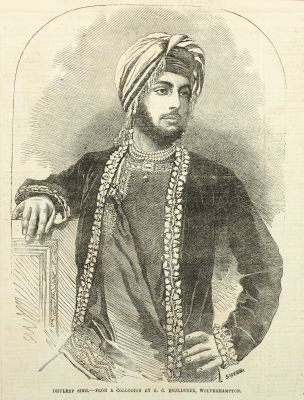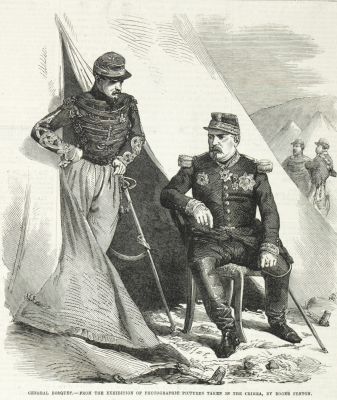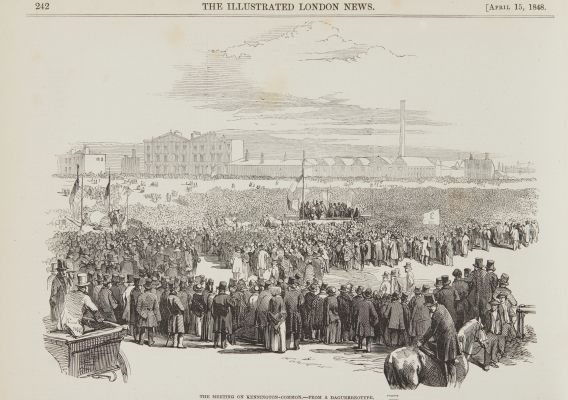
Title
The Picture of the Metropolis of the British EmpireArtist
Claudet, Antoine (French, 1797-1867)Publication
The Illustrated London NewsDate
1843Process
Engraving (from photograph)Image Size
29.5 x 119 cmSheet Size
80 x 130 cm
Herbert Ingram believed that photography, first announced to the world in 1839, could be of use to his illustrated newspaper and he had in mind the publication of this giant view of London photographed from the top of the Duke of York’s column, 124 feet high. Official permission was granted for photographs to be taken from its summit and Antoine Claudet, with his daguerreotype camera, climbed the twisting steps inside the monument. At the dizzy top he set up his apparatus and exposed a sequence of views of London, looking north, and another sequence looking south. After development, the daguerreotype plates were laid side by side in two rows one above the other to make a lay-out of the picture which was to be printed on paper four feet four inches wide and nearly three feet high, but first an artist, C. F. Sargent, using a pencil, had to draw the photographic detail onto the smooth surface of the biggest wood-block ever made. It was composed of sixty pieces of box-wood joined tightly together "without line, speck or flaw" and then sent to Ebenezer Landell’s engraving firm where he and his staff of eighteen assistants worked day and night for two months on the largest engraving ever executed. The panorama was then printed by Palmer and Clayton and given to the weekly subscribers who had taken the magazine for the prior 6 months and otherwise sold to clients from the Illustrated London News premises at 198 Strand. The Illustrated London News was first published Saturday 14th May 1842, the first illustrated weekly news magazine, flourishing throughout the nineteenth century and well into the twentieth. Source: [1]
References
[1] https://www.iln.org.uk/iln_years/year/1843.htm








